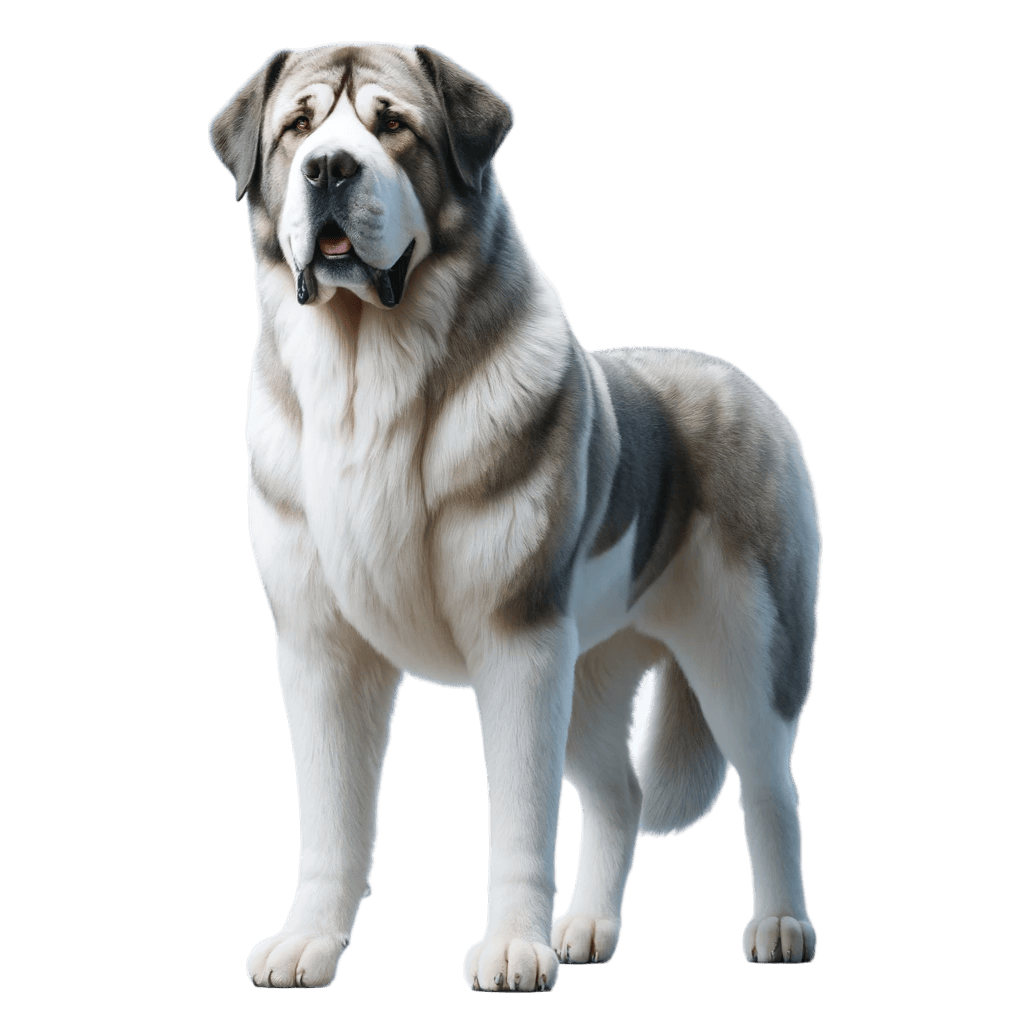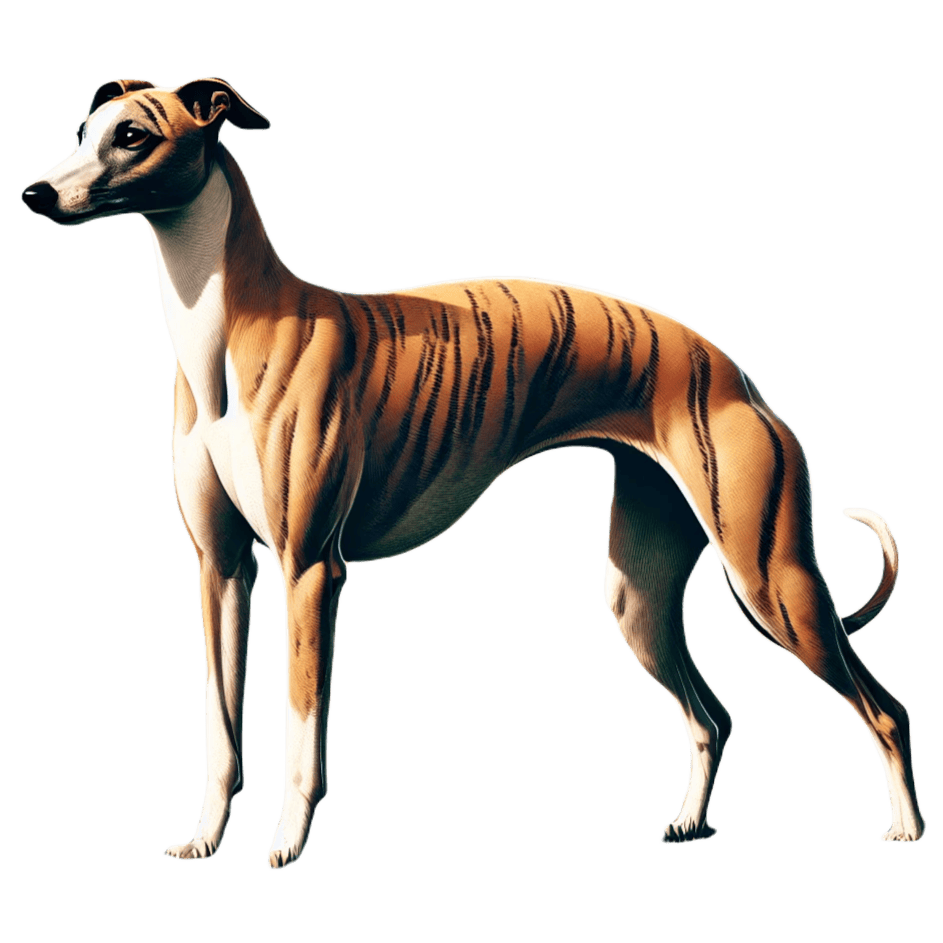PINSCHER
A brief overview
The Miniature Pinscher is a small but energetic dog that stands out for its intelligence and courage. Due to its agility and lively temperament, it is perfect both as a family companion and an alert watchdog. Its short, smooth coat is easy to care for, and its charming appearance attracts attention. Miniature Pinschers form strong bonds with their guardians and are loyal and devoted. They are ideal for people with active lifestyles who can provide them with plenty of exercise and mental stimulation.
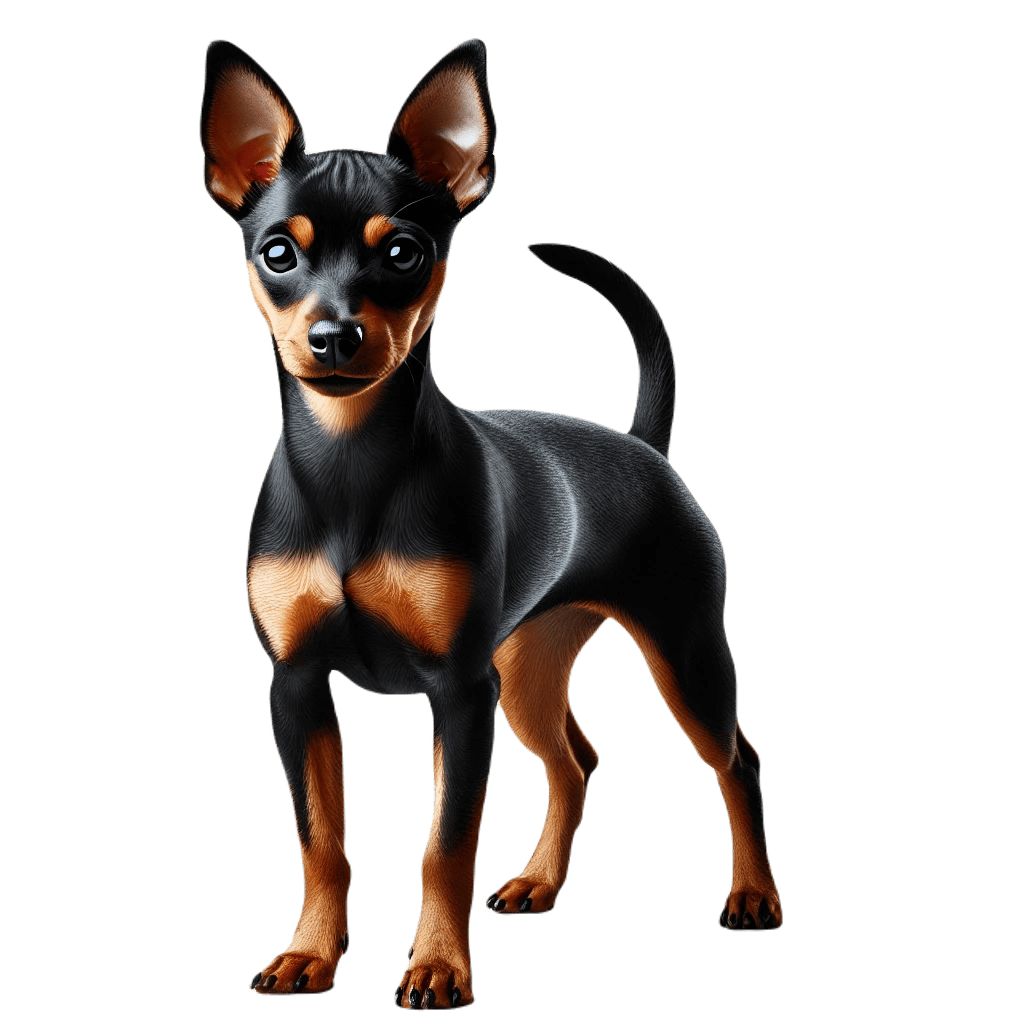
Table of contents
Country of origin
The dog originated in Germany.
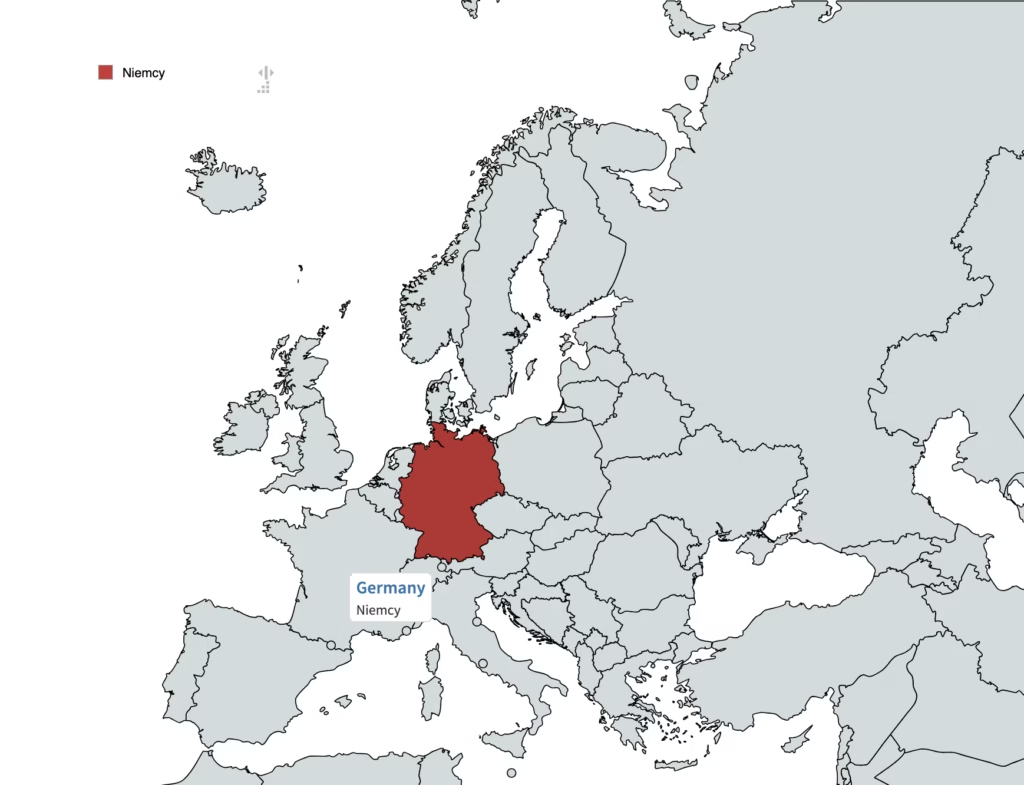
BREED CHARACTERISTICS
Weight
4 – 6 kg.
Height
25 – 30 cm.
Type of hair
Short, smooth, shiny coat. Uniform red, red or black underbrush color.
Life expectancy
15 years.
Health
The breed is considered quite healthy.
Character
Temperamental, confident, intelligent and resilient.
Need for exercise
Big!
FCI classification
Group 2 (pinschers, schnauzers, molossers and Swiss cattle herding dogs), section 1.1 (pinschers).
Price
2,000 – 5,000 PLN (ZKwP).
History and origins
The Miniature Pinscher has a rich history dating back to the 19th century, when it gained popularity in Germany as a guard and companion dog. It was bred in large numbers in the late 19th and early 20th centuries, with more than 1,300 entries for the breed recorded in the German pedigree book in 1925. Originally pinschers had a variety of colors, but today they are bred mainly in two colors: red and black-furred. In Poland, the first miniature pinschers appeared in the post-war years, gaining popularity mainly in the late 1960s and early 1970s.
Appearance and physique
The Miniature Pinscher is a small but agile dog with an elegant and proportionate build. It has a short, smooth and glossy coat, which comes in red, red and black-furred colors. The head is proportionate to the rest of the body, with a distinct transition from the forehead to the muzzle. The ears are upright and triangular, and the eyes are dark, medium-sized, with a lively expression. The tail is usually natural, carried in a slight curve.
Temperament and behavior
The Miniature Pinscher is a dog with a lively and energetic temperament. He is very intelligent, which makes him a quick learner and willing to cooperate with humans. Despite its small size, it is brave and alert, making it a good watchdog. He is also quite barky. The Miniature Pinscher is loyal to its handler and often forms a strong bond with him, but can be somewhat distrustful of strangers. It is a very social dog, and usually does not tolerate solitude well, so it will do best with an active family that will give it plenty of attention.
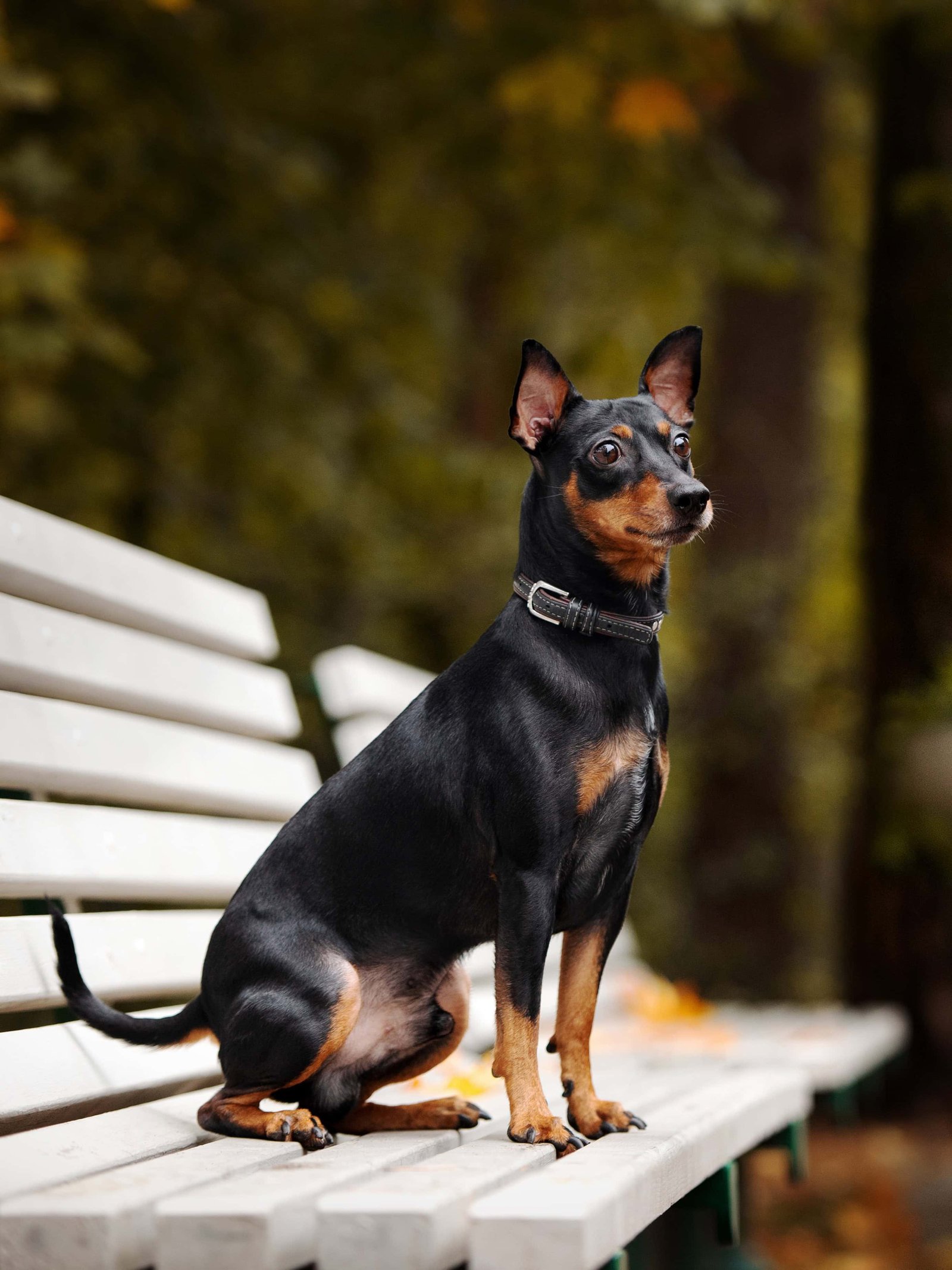
Training and activity
The training of the miniature pinscher should begin from the first days in the new home. Due to their intelligence, pinschers are quick learners and eager to obey commands, but consistency and patience are key in their upbringing, as they can sometimes be stubborn. Miniature pinschers are full of energy and need lots of exercise. Daily walks, playtime and exercise are essential to give them adequate physical and mental stimulation. They also excel at canine sports such as agility and obedience, which use their agility and savvy. Activity not only keeps them fit, but also helps prevent behavioral problems resulting from boredom. It is also very important to socialize the miniature pinscher with other dogs, otherwise they can sometimes be aggressive towards them. Attention should also be paid to interactions with children, as their often violent and unpredictable movements can also cause aggressive behavior from the dog.
Health and life expectancy
The Miniature Pinscher is a generally healthy and long-lived breed. With proper veterinary care and the right diet, these dogs can live 12 to 15 years, and some even longer. Despite their generally good health, Miniature Pinschers can be prone to certain conditions, such as dental problems (tartar, periodontal disease), eye disease (cataracts, progressive retinal atrophy) and joint problems such as dislocation of the patella or elbow dysplasia. They also have Legg- Calve- Perthes disease (necrosis of the femoral head), mucopolysaccharidosis VI (MPS), Von Willebrand’s disease type 1 (vWD1), alopecia of a flared coat, epilepsy, bladder stones (cystinuria), portal-peripheral anastomosis, autoimmune hemolytic anemia or brachyuria (“stumpy tail”). Their heart should also be monitored regularly, as they have a high affinity for cardiovascular disease.

Care and custody
Grooming a miniature pinscher is simple, consisting of regular brushing once a week, possibly more often during moulting. You should also brush your dog’s teeth regularly (preferably daily) and give chews to aid oral hygiene, as pinschers are prone to dental problems. Due to their small body weight, they can also get cold quickly, and some of them need warm clothes in winter
Diet and nutrition
The diet of a miniature pinscher should be well balanced and adapted to its high level of activity. Meals should be given regularly in small portions. Miniature pinschers tend to be overweight, so it is also important to avoid overfeeding and control the amount of treats
Maintenance costs
The cost of maintaining a miniature pinscher can be quite low, but be prepared for additional expenses related to the dog’s grooming and health.
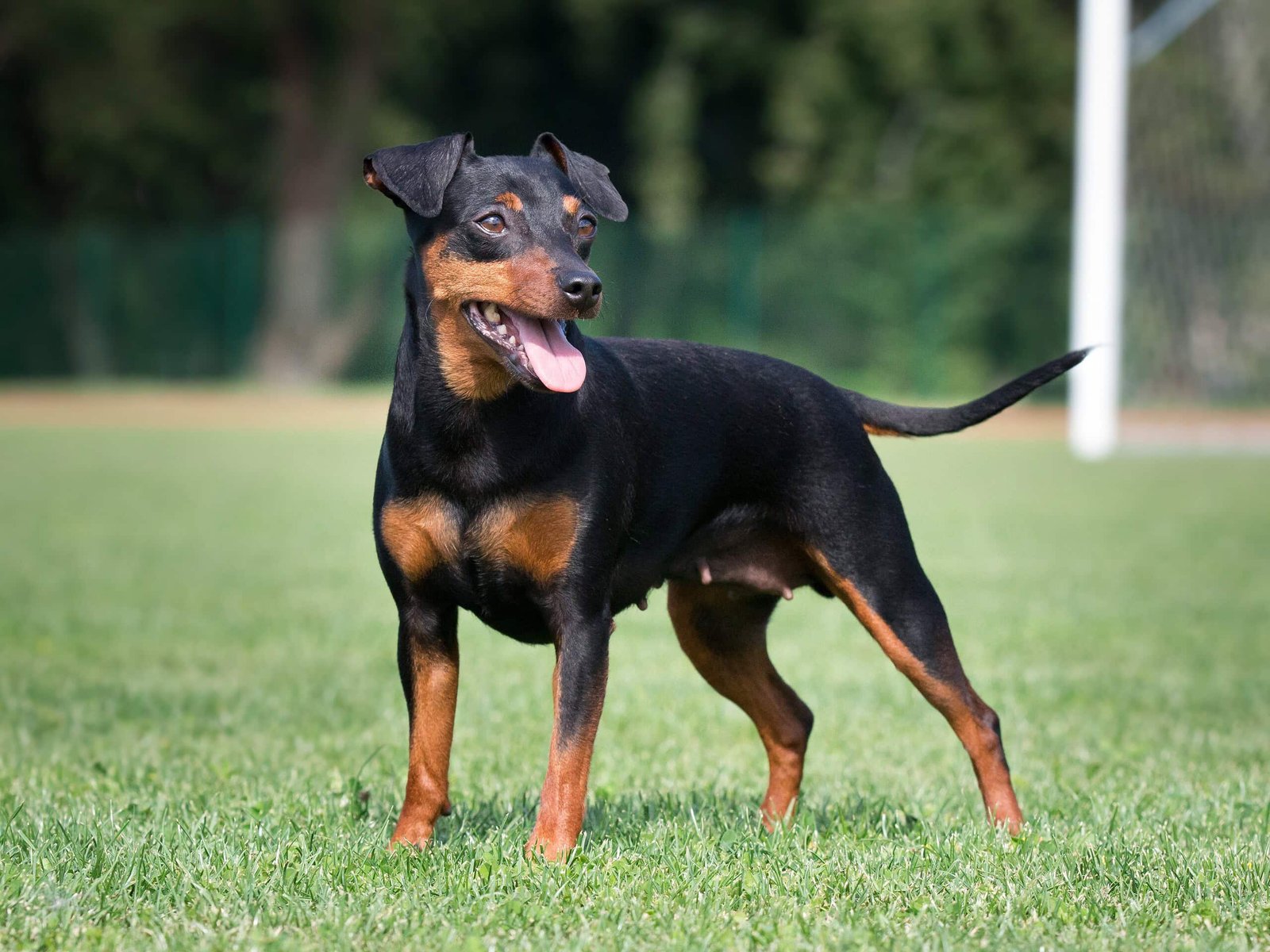
Buying or adoption
Both approaches have their merits, but keep in mind that a pinscher from adoption (often with an unknown past) may exhibit aggressive behavior toward other dogs or children and require additional work.
Own breeding
As with other breeds, running your own miniature pinscher kennel requires passion, knowledge and commitment. The breeder should take care of the health and well-being of the dogs and provide them with appropriate living conditions. It should be remembered that despite their small size, pinschers need a lot of exercise and attention, as well as careful socialization. It is also important to perform tests for the most common genetic diseases of the breed (PRA, vWD1, MPS, brachyuria, cystinuria), as well as ophthalmological and orthopedic tests.
Did you know?
Summary
Through the eyes of a behaviorist
The Miniature Pinscher is a breed with high intelligence and a lively temperament. They are very attached to their caretakers and can form strong bonds, but can be somewhat distrustful of strangers. Because of their energetic nature, need for exercise and hunting instinct, regular exercise and mental stimulation are crucial to prevent behavioral problems. Miniature Pinschers can be stubborn, which requires a consistent and patient approach to training. Early socialization is also important for a pinscher to get along well in a variety of situations, with other dogs and with people. Despite their small stature, pinschers have a strong guarding instinct and can be very alert, which sometimes leads to excessive barking.
Through the eyes of a veterinarian
The Miniature Pinscher is generally a healthy and hardy breed, although like any dog, it requires regular medical care. These dogs are prone to dental and gum problems, so daily oral hygiene is key. Their joints should also be monitored, due to their propensity for patella dislocation, femoral head necrosis and elbow dysplasia. It is also important to ensure they get enough exercise to prevent them from becoming overweight, which can lead to further health problems.
